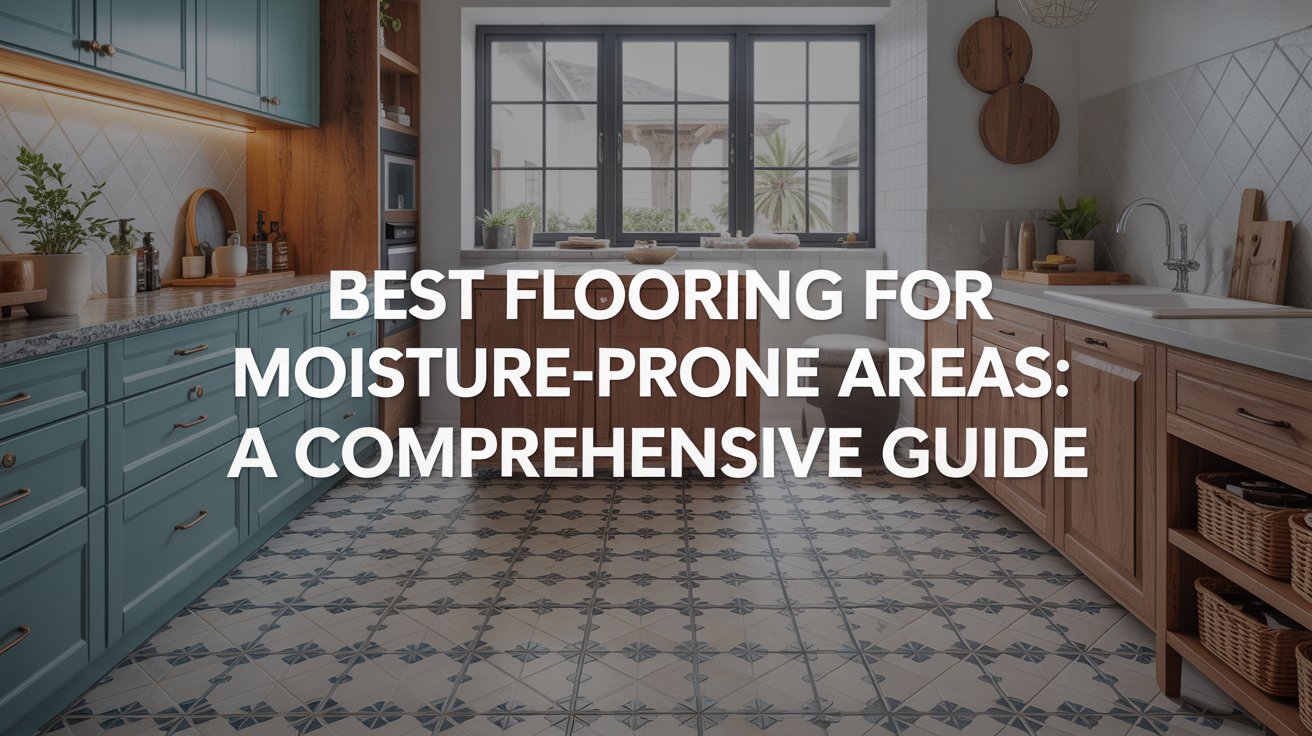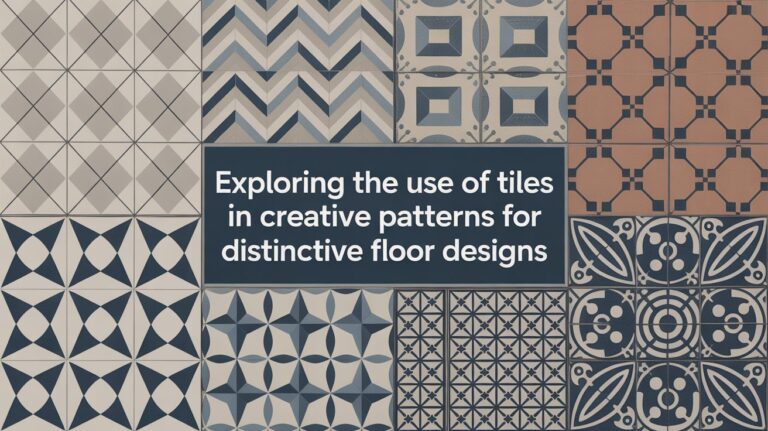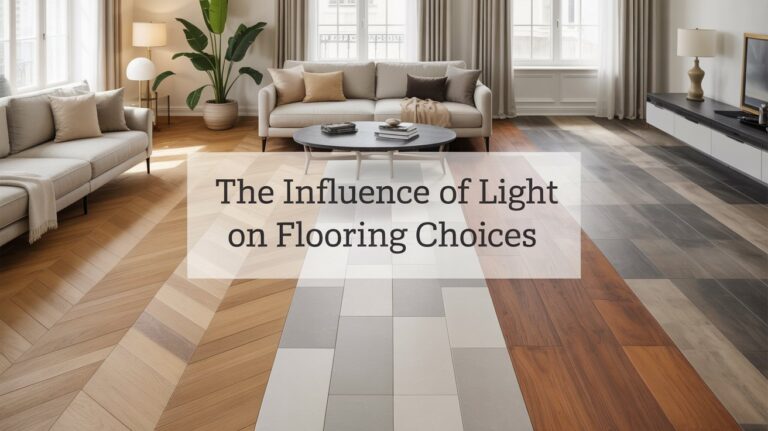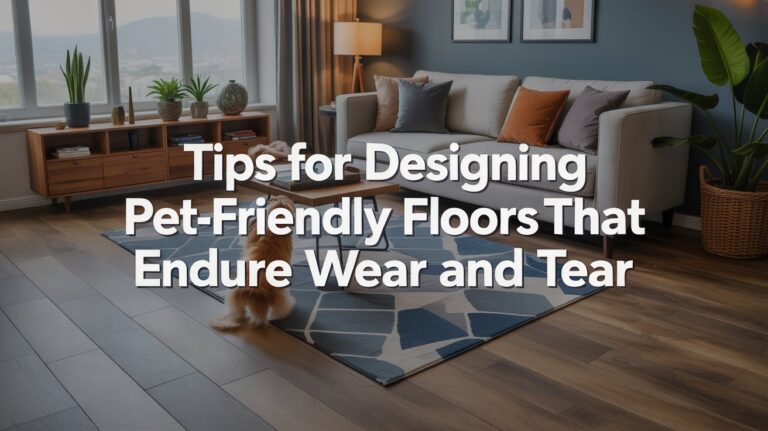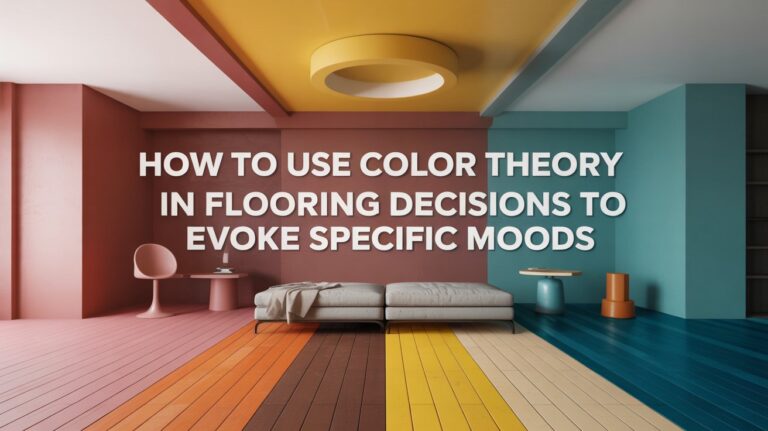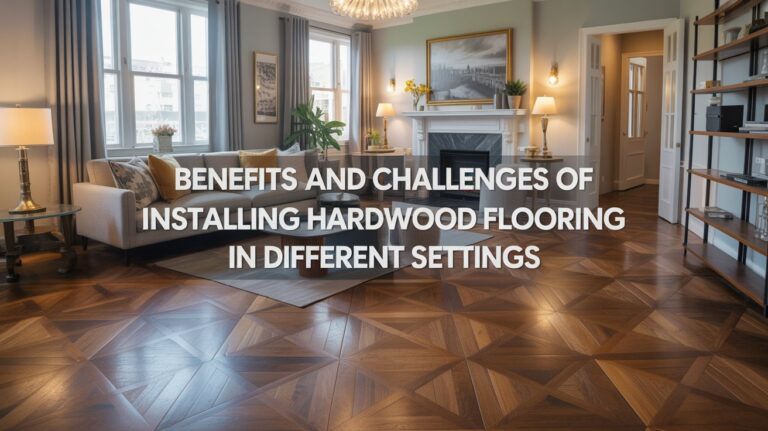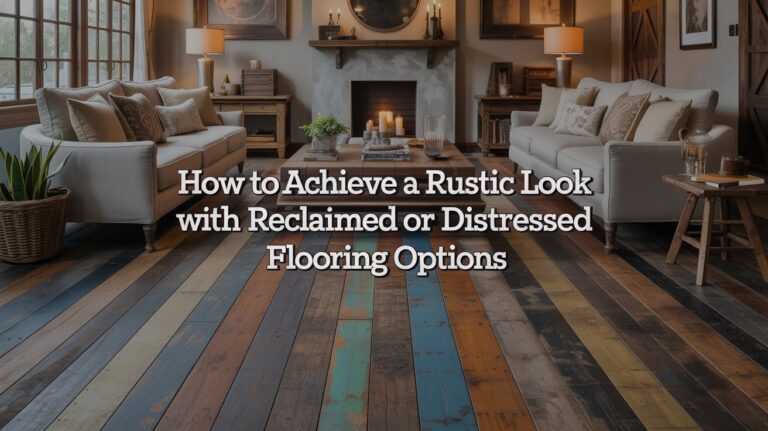How to Select the Best Flooring for Moisture-Prone Areas Like Kitchens and Bathrooms
I have been, or can be if you click on a link and make a purchase, compensated via a cash payment, gift, or something else of value for writing this post. As an Amazon Associate, I earn from qualifying purchases. Please read my full Affiliate Disclosure for more information.
When selecting flooring for moisture-prone areas, prioritize water resistance and easy maintenance. Look for vinyl with waterproof cores, porcelain or ceramic tile, or moisture-rated laminate with tight seams and strong edges. Guarantee a solid, level subfloor, proper underlayment, and thorough waterproofing of joints and transitions. Consider eco-friendly options that don’t compromise durability. Balance durability, cost, and aesthetics, and plan for prompt spill cleanup and humidity control. If you keep exploring, you’ll uncover essential tips you’ll want to know.
Key Takeaways
- Prioritize moisture-resistant cores and water protection (e.g., vinyl waterproof cores, porcelain/ceramic tile) for kitchens and bathrooms.
- Ensure tight joints, quality sealants, and proper subfloor prep to prevent water intrusion and warping.
- Consider eco-friendly options with durable finishes and solid warranties, balancing cost and resilience.
- Favor easy maintenance surfaces that tolerate spills, humidity, and routine cleaning without damage.
- Plan for proper underlayment and drainage-friendly installation to minimize gaps and facilitate drying.
Understanding Moisture Resistance in Flooring
Moisture resistance in flooring refers to how well a material withstands dampness, spills, and humidity without warping, swelling, or staining. You’ll evaluate products by looking at water absorption, sealants, and core construction. For moisture-prone spaces, prefer water-resistant cores, tight joints, and protective finishes. Consider installation methods that minimize gaps and allow drainage where needed. Eco friendly options exist alongside performance, so you don’t have to compromise values for durability. Aesthetic versatility matters too: select textures and tones that suit your space while resisting humidity. Aim for clear warranties and professional installation guidance to ensure consistent, long-term performance.
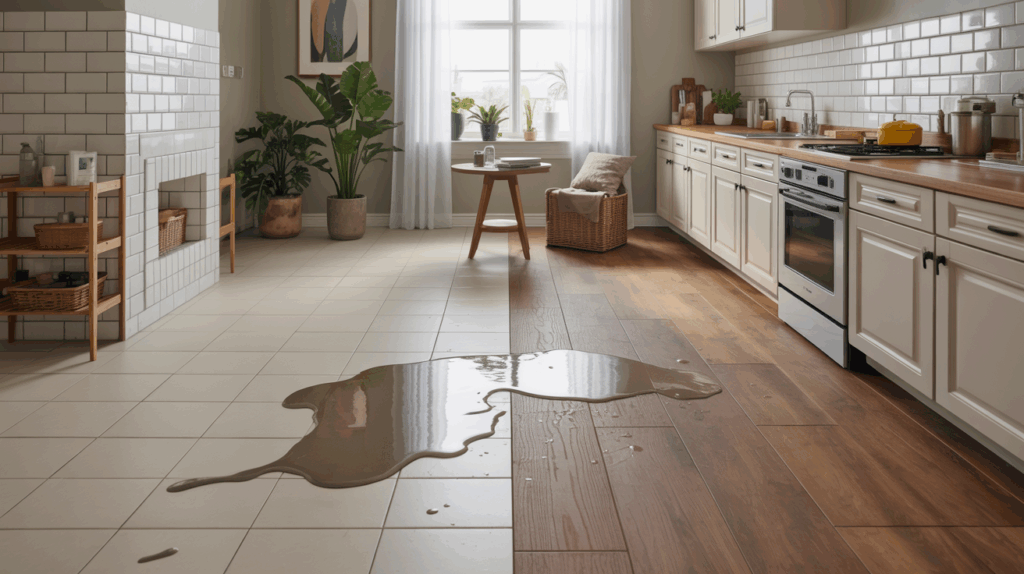
Key Factors: Durability, Maintenance, and Care
Durability matters most when moisture is involved, so you’ll want flooring that resists wear and water exposure over time. Focus on durability basics and choose materials that stand up to foot traffic, spills, and humidity without degrading. Then pair that with easy maintenance tips to keep your floor looking good with minimal effort.
Durability Basics
When choosing flooring for moisture-prone areas, durability hinges on how well a material resists wear, moisture intrusion, and cracking over time. You’ll assess core strength, edge robustness, and seal effectiveness, since these determine long-term performance. Maintenance should be practical, not punishing: choose surfaces that tolerate occasional cleaning without damage. Look for systems that resist swelling, warping, and mold growth, yet remain easy to repair. Decorative patterns count toward aesthetic appeal, but don’t sacrifice stability. Regular care, including prompt spills and proper humidity control, extends life. In short: select a resilient, well-sealed option, designed for sustained moisture exposure.
Easy Maintenance Tips
Even with resilient flooring, easy maintenance hinges on smart choices about routine care, spill response, and consistent environment control. You’ll minimize issues by selecting Eco friendly options and preserving aesthetic appeal through simple habits.
- Clean spills promptly with a microfiber cloth; avoid harsh cleaners.
- Sweep or vacuum regularly to prevent grit damage.
- Use mats at entrances and maintain stable humidity levels.
- Schedule periodic seals or coatings as recommended by manufacturers.
Careful routine reduces wear, extends life, and keeps surfaces looking fresh. With these steps, you balance durability, low maintenance, and a polished look that suits moisture-prone kitchens and baths.
Popular Moisture-Resistant Options Compared
If you’re choosing flooring for moisture-prone areas, these popular moisture-resistant options stand out for practicality and cost. You’ll compare vinyl, tile, and laminate by moisture tolerance, maintenance, and price. Vinyl offers waterproof cores and forgiving installs, but consider long-term wear and eco friendly options when possible. Porcelain or ceramic tile delivers superb water resistance and durability, with understated upkeep and broad design choices, yet heavier, pricier, and slower to install. Laminate is budget-friendly but limits moisture exposure. For aesthetic considerations, choose patterns and textures that mimic natural materials without sacrificing resilience. Prioritize options that balance performance, cost, and eco awareness.
Installation Considerations for Wet Areas
Installing flooring in wet areas demands careful prep and precise execution. You’ll guarantee long‑lasting performance by focusing on two essentials: Waterproofing techniques and solid Subfloor preparation. Here’s how to approach it:
- Assess moisture levels and address leaks before install.
- Choose materials rated for high humidity and standing water risk.
- Seal joints and connections to prevent water intrusion.
- Prepare the subfloor with a clean, flat, dry surface and proper underlayment.
Practical Pros, Cons, and Real-World Scenarios
When choosing flooring for moisture-prone areas, you’ll weigh practical pros and cons and consider real-world scenarios to avoid costly mistakes. In real homes, durability matters: look for water resistance, slip potential, and ease of cleaning. Pros include lower maintenance and quicker repairs, while cons often involve higher upfront costs or limited design choices. Real-world scenarios highlight moisture spikes, spills, and humidity cycles—plan for these with proper underlayment and sealing. Eco friendly options can align with long-term savings, and aesthetic versatility lets you match diverse decors. Prioritize reliable warranties and installation requirements to prevent future failures or dissatisfaction.
Quick Decision Checklist for Kitchens and Bathrooms
Now that you’re choosing flooring for moisture-prone kitchens and bathrooms, start with quick waterproofing tips, so you know what level of protection you need. Then consider surface durability and how installation and maintenance will affect long-term performance in high-moisture spaces. Use these checks to guide your decision and guarantee the finished floor holds up under daily use.
Quick Waterproofing Tips
Quick waterproofing can save you future headaches, so focus on fast, effective choices for kitchens and bathrooms. You’ll install solid moisture protection with simple steps you can trust.
- Moisture barrier basics: choose a proven layer that resists moisture seepage.
- Sealant application: apply evenly; forego gaps that invite leaks.
- Targeted joints: seal seams and edge connections thoroughly.
- Quick testing: water test after curing to confirm integrity.
Keep it practical: prep surfaces, follow manufacturer guidance, and document products. This keeps maintenance minimal and damage controllable.
Surface Durability Guide
Durability matters as you move from waterproofing basics to long-term performance in kitchens and baths. In this Surface Durability Guide, you’ll quickly assess a flooring’s resilience to foot traffic, spills, and abrasion. Look for hardness ratings and wear layers that match moisture exposure, not just looks. Choose finishes and profiles that resist scratching and staining, yet are easy to clean. Decorative patterns can disguise wear without sacrificing practicality, while you maintain an even, cohesive aesthetic appeal. Prioritize core materials proven for moisture-prone areas, and verify warranties align with your actual use. Use quick checks, not guesswork, for durable, confident choices.
Installation & Maintenance
Installing and maintaining flooring in kitchens and bathrooms doesn’t have to be confusing. Here’s a quick decision checklist to keep moisture in check while preserving style and value.
- Inspect seams and grout for gaps; reseal as needed.
- Clean with pH-balanced cleaners to protect finishes and eco friendly options.
- Schedule annual inspections for warping, cracking, or color changes.
- Balance aesthetics and durability by choosing materials with good moisture resistance and aesthetic considerations.
Tips: choose eco friendly options when possible, and match installation method to subfloor and climate for long-term performance. Keep notes for future refinishing or replacement decisions.
Conclusion
In moisture-prone spaces, your best bet is choosing flooring that’s durable, easy to seal, and simple to maintain. Prioritize water resistance, slip resistance, and a dependable installation method. Consider vinyl, porcelain tile, and certain engineered woods with protective coatings for kitchens and bathrooms. Remember to account for expansion gaps, acclimation, and proper underlayment. By weighing durability, maintenance needs, and cost, you’ll pick a solution that stays looking good and performing well through many spills and showers.
